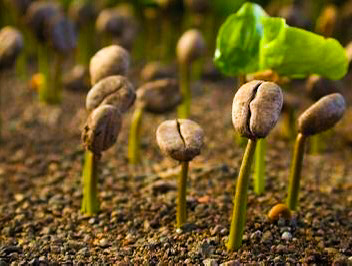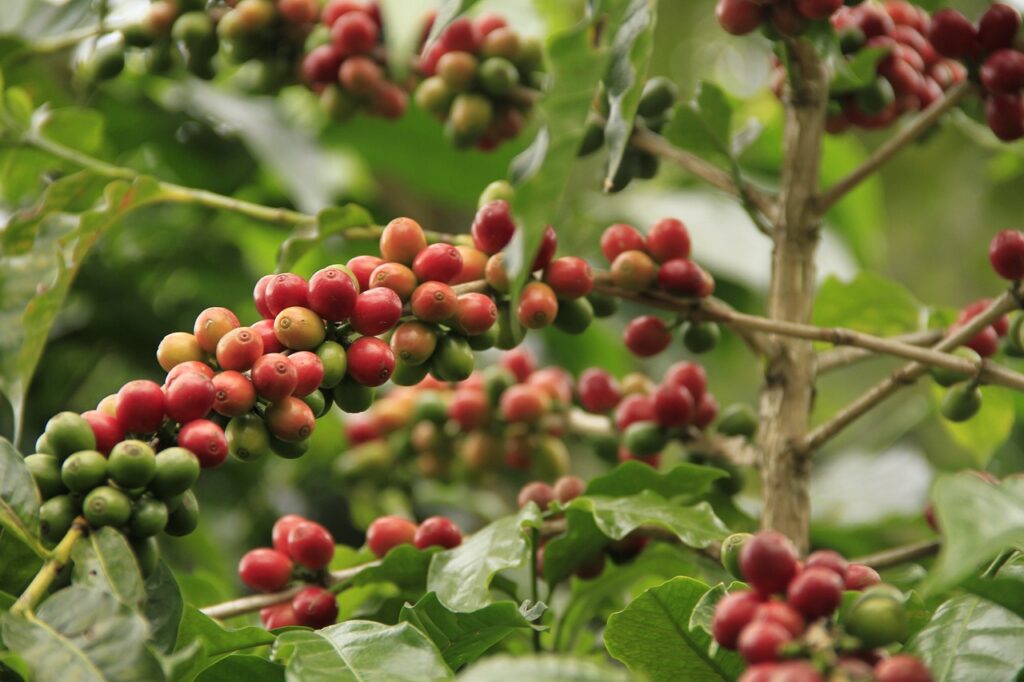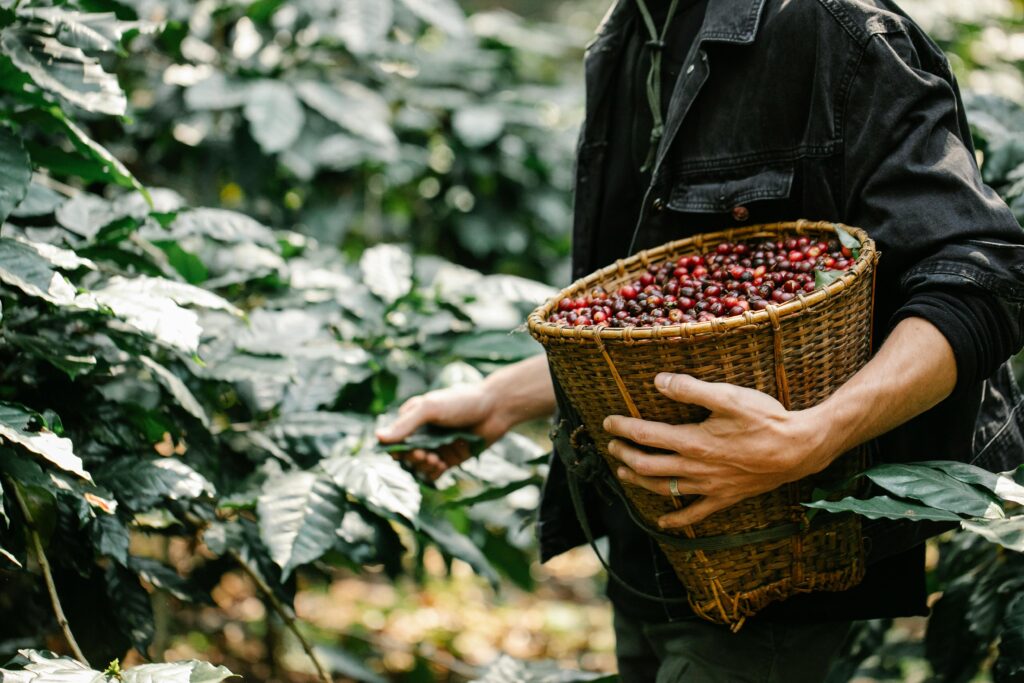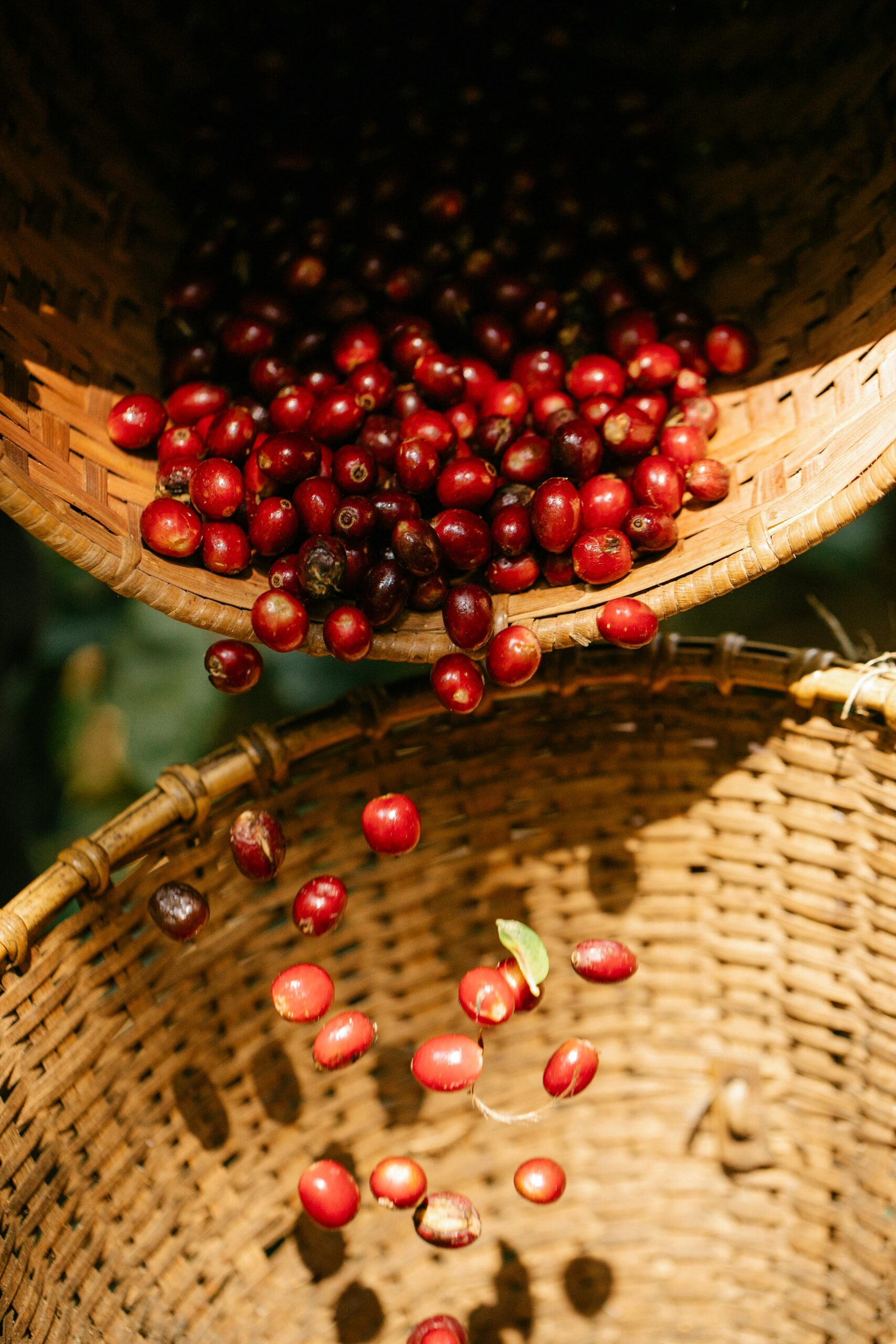Coffee Stages
Let’s get Started…
coffee language.
Anatomy of a Coffee Bean

Planting
Coffee plants thrive in specific environmental conditions, including high altitude, consistent rainfall, and well-drained soil. Farmers select suitable sites for planting based on factors such as climate, elevation, soil type, and access to water sources.Before planting, the land is cleared of weeds, rocks, and debris. Farmers may also implement soil conservation measures such as terracing or contour planting to prevent erosion and optimize water retention.Coffee plants are propagated from seeds or cuttings. Seeds are typically planted in nurseries, where they are germinated and grown into seedlings under controlled conditions. Once the seedlings reach a certain size and maturity, they are transplanted to the field.


Growth
Coffee plants are usually planted during the rainy season to ensure adequate moisture for establishment. Farmers dig holes or trenches in the prepared soil and plant the seedlings at the appropriate spacing, typically around 6 to 8 feet apart, depending on the variety and planting system.After planting, coffee plants require ongoing care and maintenance to ensure healthy growth and productivity. This includes activities such as irrigation, fertilization, weed control, and pest and disease management. Farmers also prune the plants to promote optimal branching and airflow.

Altitudes and Coffee
Altitude plays a crucial role in determining the quality and flavor profile of coffee beans. Generally, higher altitudes are associated with superior coffee quality due to several factors:
- Temperature: As altitude increases, temperatures tend to decrease. Cooler temperatures slow down the maturation process of coffee cherries, allowing them to develop more complex flavors and sugars. This slower ripening process results in beans with higher acidity and brightness, contributing to a more nuanced and flavorful cup of coffee.
- Sunlight: Higher altitudes often mean clearer skies and greater exposure to sunlight. This extended exposure to sunlight promotes slower, more even ripening of coffee cherries, resulting in beans with greater complexity and sweetness.
- Rainfall: Altitude can also influence rainfall patterns, with higher altitudes often experiencing more consistent rainfall or moisture from fog or mist. Adequate moisture levels are essential for healthy coffee plant growth and development, ensuring the cherries mature evenly and maintain their quality.
- Soil Quality: Mountainous regions often feature volcanic or mineral-rich soils, which can impart unique flavors and characteristics to the coffee beans. These soils typically have excellent drainage properties, preventing waterlogging and allowing roots to access essential nutrients.
- Pest Control: Higher altitudes are generally less susceptible to pests and diseases that can affect coffee plants. This reduces the need for chemical pesticides and promotes healthier, more resilient crops.
SO, you see, COFFEE GROWING IS A PROCESS…
“Exploring the world of coffee is a journey of discovery, where every cup holds a story waiting to be savored.” – Unknown
Our partners






Want to make a difference?
Coffee farms can provide valuable ecosystem services beyond coffee production. These include carbon sequestration, soil conservation, water regulation, and habitat preservation for wildlife. Maintaining biodiversity on coffee farms through shade trees, cover crops, and native plantings enhances these ecosystem services and contributes to sustainable farming practices. By recognizing and valuing the ecological benefits of coffee farming, growers can promote environmental stewardship and support long-term sustainability in coffee production.



